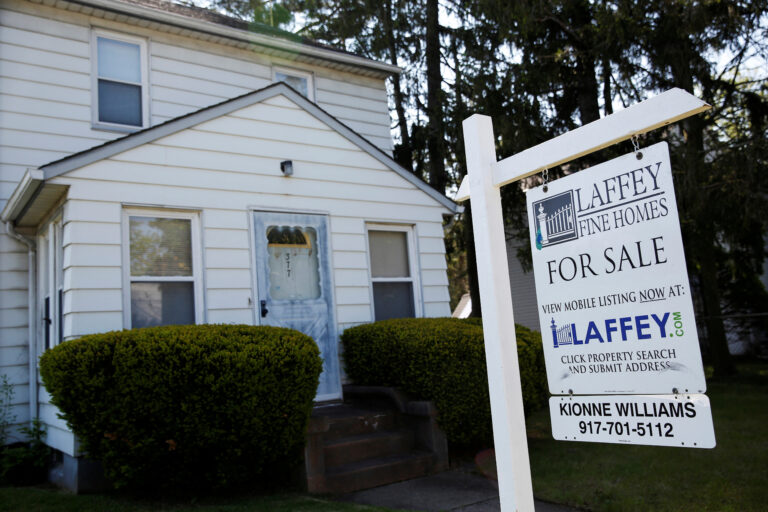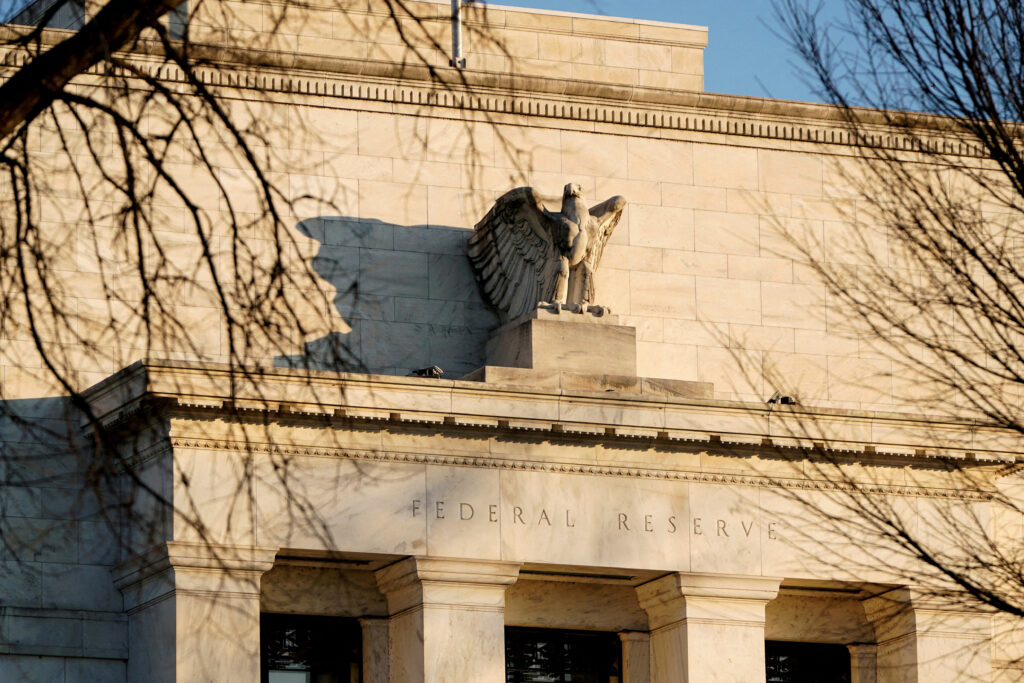WASHINGTON – U.S. producer prices were unchanged in September as a small rise in the cost of services was offset by cheaper goods, pointing to a still-favorable inflation outlook and supporting views that the Federal Reserve would cut interest rates again next month.
The unexpected flat reading reported by the Labor Department on Friday followed data on Thursday showing consumer prices increased slightly more than expected last month. But some components that go into the personal consumption expenditures (PCE) price indexes were a bit firmer, suggesting fairly warmer underlying inflation in September. The U.S. central bank tracks the PCE price indexes for its 2% inflation target.
“We anticipate a more modest 25 basis points reduction next month,” said Paul Ashworth, chief North America economist at Capital Economics. “We still expect underlying price inflation to continue moderating back to target by early next year, but the risks to that view are no longer skewed to the downside.”
The unchanged reading in the producer price index for final demand last month followed an unrevised 0.2% gain in August, the Labor Department’s Bureau of Labor Statistics said. Economists polled by Reuters had forecast the PPI edging up 0.1%.
In the 12 months through September, the PPI increased 1.8% after climbing 1.9% in August. Consumer prices rose a bit above expectations in September, lifted by higher food costs.
Most economists did not view the uptick in inflation as a sign that price pressures were building up again. Housing inflation cooled considerably in September.
Still, high prices continue to color consumers’ views of the economy. A separate survey from the University of Michigan on Friday showed its preliminary consumer sentiment index slipped to 68.9 in October from a final reading of 70.1 in September. Economists had forecast a preliminary reading of 70.8.
Consumers’ 12-month inflation expectations rose to 2.9% from 2.7% last month.
The ebb in sentiment was across political party affiliation, though more pronounced among Republicans.
Inflation is a major issue for voters in next month’s presidential election. Vice President Kamala Harris, the Democratic Party’s nominee, is locked in a tight race with the Republican Party’s candidate Donald Trump.
Last month, the Fed cut its policy rate by 50 basis points to the 4.75%-5.00% range. It hiked rates by 525 basis points in 2022 and 2023.
Stocks on Wall Street traded higher. The dollar slipped against a basket of currencies. U.S. Treasury yields dipped.
MIXED DETAILS
The producer price data showed wholesale services prices increased 0.2% in September after rising 0.4% in August. They were lifted by a 3.0% jump in deposit services. There were also increases in prices for machinery and vehicle wholesaling as well as furniture retailing, desktop and portable device application software publishing, and apparel wholesaling.
Portfolio management fees rose 0.3% after gaining 0.1% in August. The wholesale cost of hotel and motel accommodation increased 1.3% after surging 3.4% in the prior month.
Prices for doctor care were unchanged for the second straight month, while the cost of hospital outpatient care edged up 0.1% after rising 0.7% in August. Hospital inpatient care rose 0.3%. Property and casualty insurance prices jumped 0.9% after climbing 0.3% in August.
Portfolio management fees, healthcare, hotel and motel accommodation, and airline fares are among the components that go into the PCE price index calculation.
With the PPI and CPI data in hand, economists estimated that core PCE increased 0.2% in September, with a risk of rounding up to 0.3%, after gaining 0.1% in August.
Still, the core PCE six-month annualized rate of increase was forecast to slow to 2.2% from 2.4% in August, a sign of a downward trend. Annual inflation was forecast at 2.6% after advancing 2.7% in August. The PCE inflation data will be published at month’s end.
“While a core PCE estimate rounding to 0.3% is not ideal for the Fed, it is not worrisome either as it comes on the heels of a string of benign prints,” said Pooja Sriram, an economist at Barclays. “We continue to expect core PCE inflation to maintain a run-rate of about 0.2% month-over-month for the remainder of the year.”
The PPI data also showed trade services, which measure changes in margins received by wholesalers and retailers, rose 0.2% last month. But margins for professional and commercial equipment wholesaling dropped 6.3%.
Wholesale goods prices dropped 0.2% after being unchanged in August. Energy prices declined 2.7% after falling 1.0% in August. Gasoline prices decreased 5.6%.
Food prices shot up 1.0%, though the cost of eggs declined 6.2%. Food prices gained 0.2% in the prior month.
Excluding the volatile food and energy components, goods prices rose 0.2% for the third straight month. That raises questions on whether the rebound in core consumer goods prices last month was a one-off event.
The narrower measure of PPI, which strips out food, energy, and trade, edged up 0.1% after rising 0.2% in August. The so-called core PPI increased 3.2% year-on-year after advancing 3.3% in August. Economists did not expect the recent hurricanes, which devastated Florida and large swathes of the U.S. Southeast, to have a material impact on inflation.
“Retailers’ and wholesalers’ margins were unaffected by previous large hurricanes in September 2017 and September 2022. However, a brief period of price gouging this time cannot be ruled out,” said Samuel Tombs, chief U.S. economist at Pantheon Macroeconomics.
(Source: ReutersReuters)
Mark Glenn is a financial journalist and breaking news reporter for ABBO News. Mark is known for his ability to deliver real-time news updates on market developments, mergers and acquisitions, corporate earnings reports, and regulatory changes, helping investors stay informed and make sound financial decisions. Read Full Bio




















